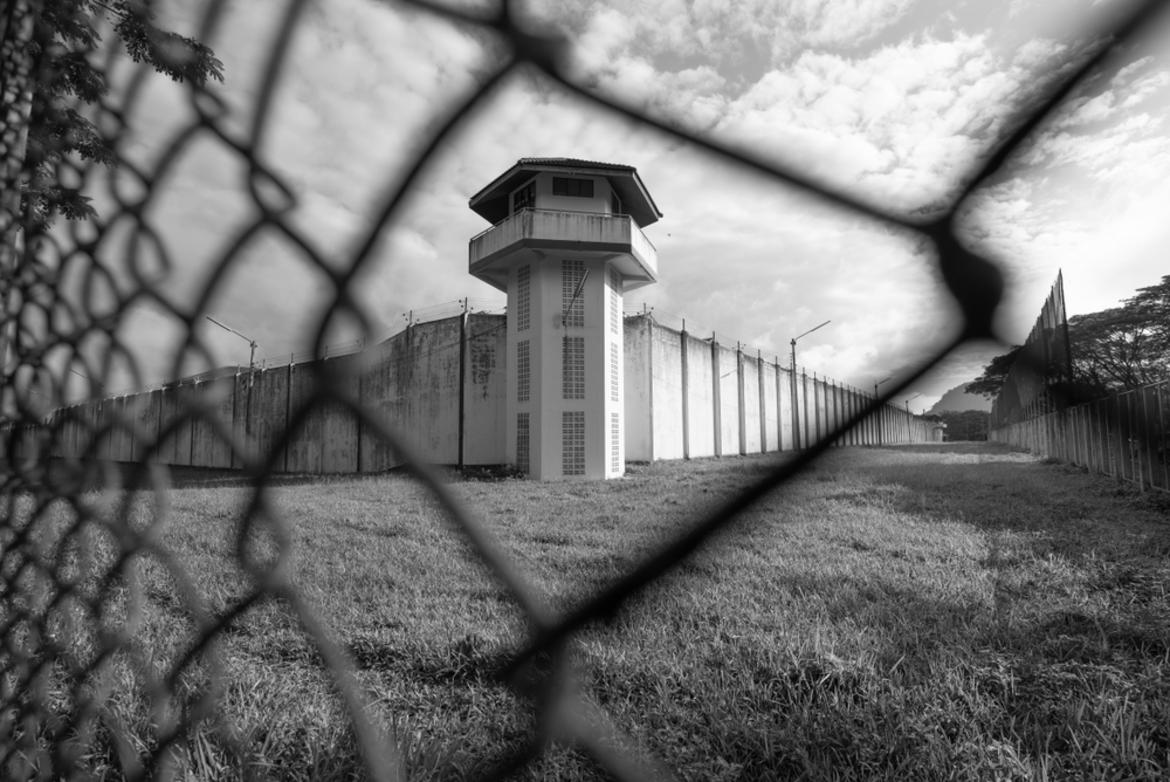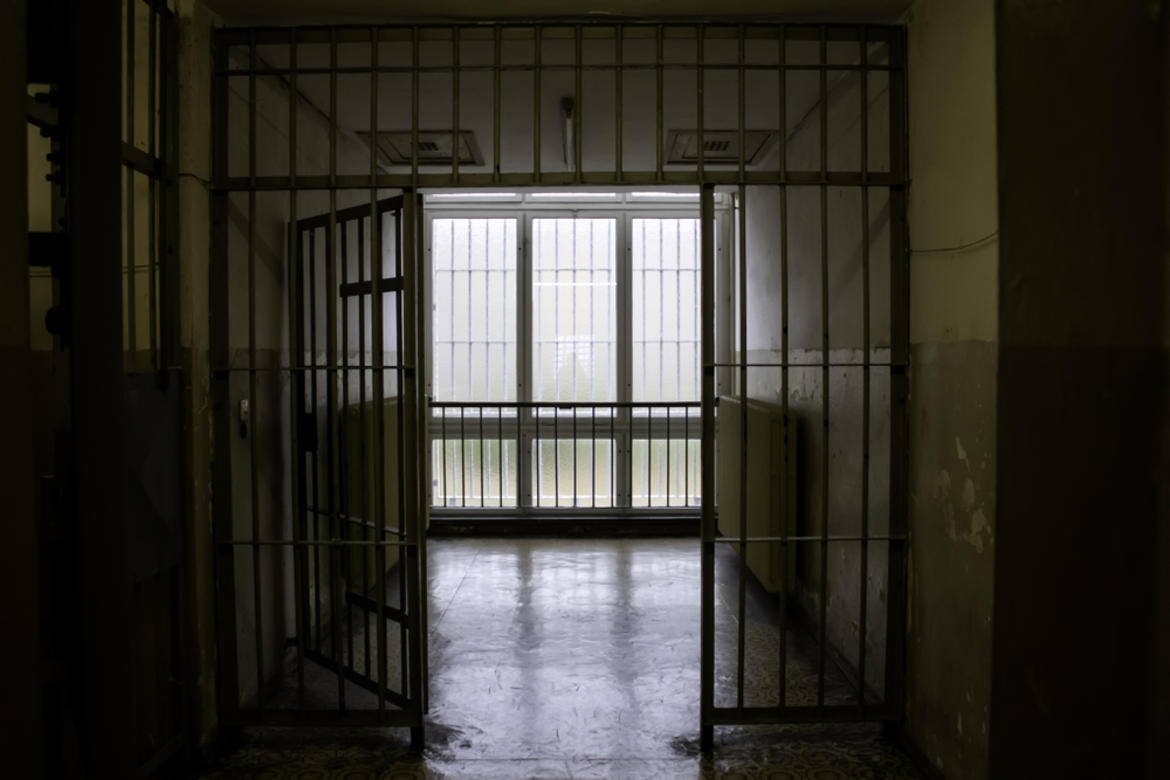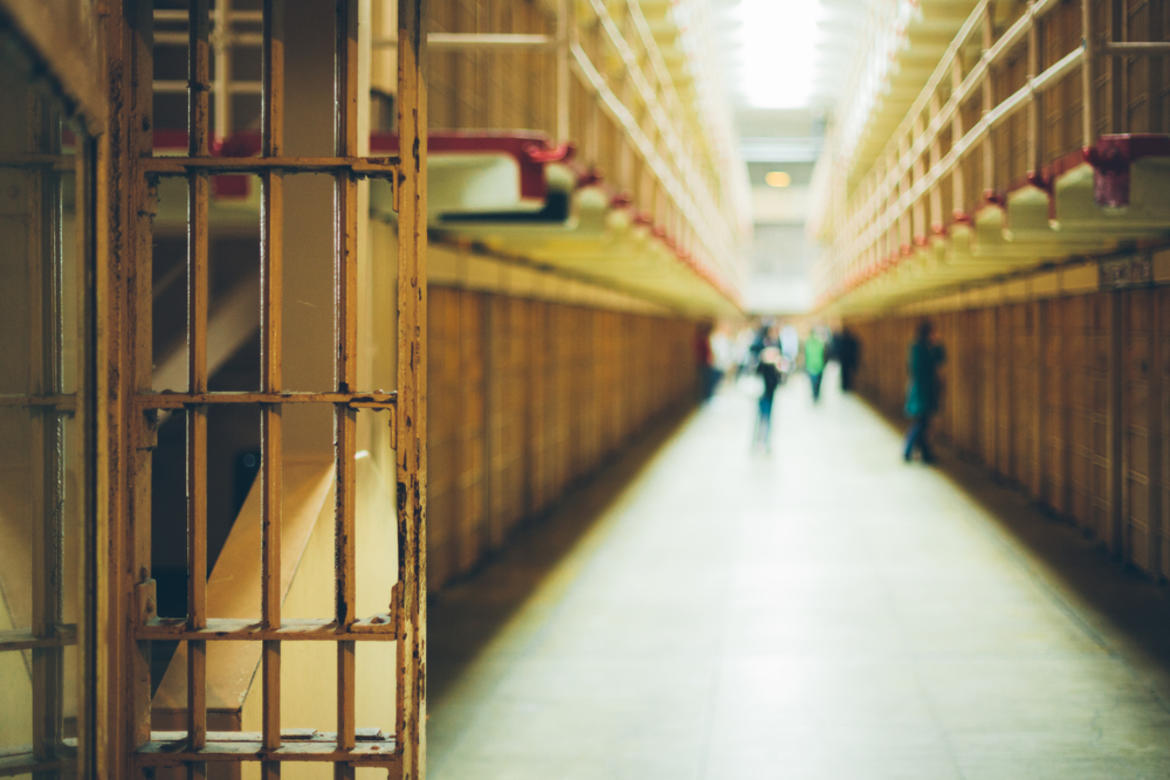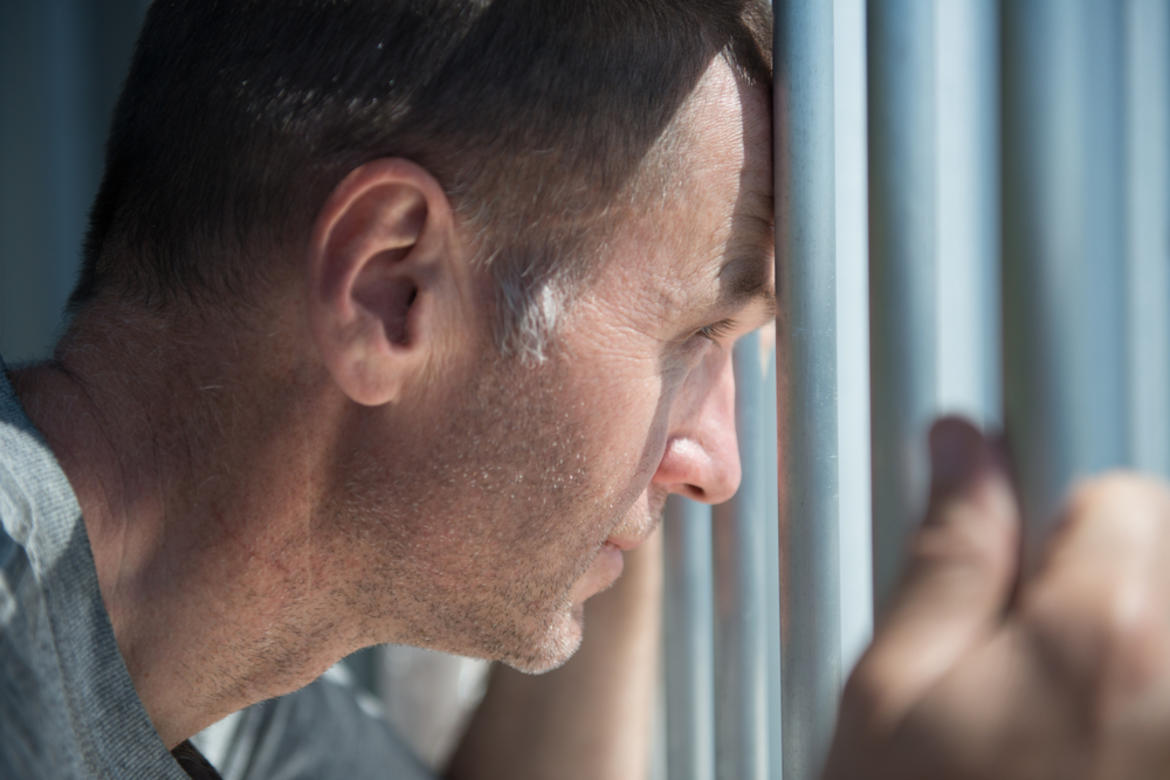Locked up: Covid-19 and prisons in Europe
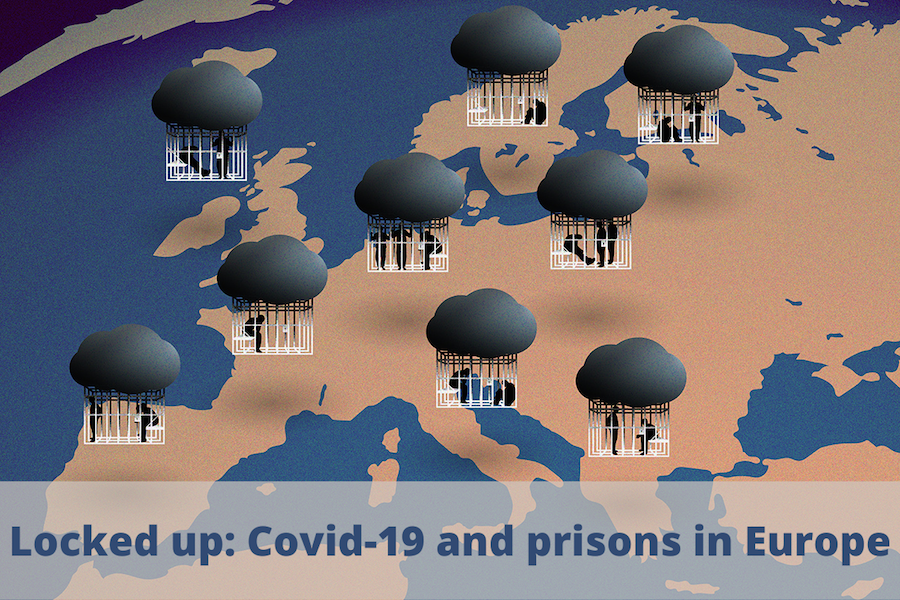
Locked-up-Covid-19-and-prisons-in-Europe
Illustration by Una Rebić/Pod črto
Life in carceral facilities has changed a lot since the COVID-19 outbreak took off. Yet little data has been made public about the spread of the coronavirus in carceral facilities. Data collected by 12 newsrooms in the European Data Journalism Network, coordinated by Deutsche Welle, shows that the effort to keep the infection under control in detention institutions came at a high cost.
Prisoners found themselves more isolated than ever: visits and education activities were suspended, vaccination campaigns were delayed, while overcrowding put the most vulnerable at risk.
The issue affects all society, because if you’re not protecting prisons, you’re not protecting the community. More than half a million people were incarcerated in Europe in the middle of the COVID-19 pandemic.
Prisons are an ideal breeding ground for viruses: overcrowded, with cramped living arrangements and often poor hygiene conditions. Moreover, many incarcerated people have multiple health risk factors.
EDJNet’s data unit has collected data from 32 European countries that show how many cases and deaths were reported in prisons, how vaccinations progressed and what measures were taken to curb the spread of the virus.
Main findings:
- Most countries locked down prisons hard and fast at the start of the pandemic. Visits were stopped, and prison leave schemes were put on hold. In many prisons, work and recreational activities were also suspended.
- Prohibitions on visitors were especially difficult for incarcerated people. Most countries introduced measures for virtual visits, which were often unthinkable before the pandemic. Low connection speeds and usage restrictions still pose problems however.
- Isolating prisoners has become a standard measure in many countries. For instance, in Ireland, incarcerated people 70 and older or with chronic illnesses were automatically placed in solitary confinement during the first wave.
- Some of the most severe and prolonged restrictions were seen in the countries with the worst prison overcrowding, which makes distancing measures impossible to implement. One in three European countries operate their prisons above official capacity.
- Adopted measures have helped, overall, not to turn prisons into runaway COVID hot spots. In many countries infection rates seem to have roughly been paralleling those of the population in general. Croatia and Greece were exceptions, since prisoners there were infected at a much higher rate than in the general population.
- Underreporting of data is an issue, as most prison administrations don’t collect data systematically. This might not necessarily be deliberate.
- During the first wave, many countries throughout Europe released people in unprecedented numbers in order to ease the pressure on prisons, but incarcerated populations are now rising again.
- Most European countries did not include incarcerated people as a priority group in their vaccination plans.
Stories
The spread of coronavirus in Greek prisons was 1.4 times faster than in the general population during July-February 2022. The occupancy rate increased during the pandemic, and one in three prisoners is estimated to have contracted the coronavirus to date.
May 18, 2022
The Hungarian prison system has undergone a significant transformation in recent years: prison capacity has been expanded and institutions have been modernised. But imprisonment is only one form of punishment.
March 31, 2022
Overcrowding, abuse of the minimum personal space of prisoners, hospitalization without segregation of patients, crowded quarantine, lack of medical staff and health measures, delayed vaccination - these are just some of the causes that lead to the virus’s spread.
March 22, 2022
During the first months of the pandemic, the spread of the virus in Greek prisons appeared to have been limited. Today it is estimated that one in three inmates has contracted coronavirus, despite the fact that correctional facilities were operating under a strict lockdown. What went wrong?
March 21, 2022
An interview with Alessio Scandurra, director of the European Prison Observatory, to understand the impact of the pandemic on European prisons, in terms of both healthcare and opportunities for inmates.
February 4, 2022
Football, the gym, personal visits, all came to an abrupt end in Hungarian prisons as the coronavirus outbreak hit. Since then, prisoners and relatives have taken to Skype. The lack of face-to-face meetings has been offset by the fact that the great majority of prisoners have been vaccinated.
January 20, 2022
"The epidemic has been contained at the cost of enormous sacrifices for France’s prison population", says Dominique Simonnot, French chief prisons inspector.
December 15, 2021
Cramped, often unhygienic, and already characterised by numerous restrictions, many prisons in Europe were hit hard by the pandemic. In Italy, where prison facilities are among the most overcrowded in the EU, the pandemic aggravated a number of preexisting systemic problems.
December 15, 2021
Aurélie, 27, spent several years in prison. Maxime, 35, was an inmate in the Paris region, where the overcrowding rate is 160%. Like 13,000 other prisoners, he got out thanks to early-release measures enacted between March and May 2020. They told us their stories.
December 14, 2021
In many European countries, containing the spread of Covid-19 has come at the price of human rights. European prisoners have had to endure extended isolation, suspended visiting hours, and the cancellation of training and recreational activities.
December 14, 2021
The data unit
 Kira Schacht (Deutsche Welle, coordinator) is a data journalist at Deutsche Welle. She studied data-driven journalism at the Technical University of Dortmund and trained at rbb science. She is part of the data journalism initiative Journocode.
Kira Schacht (Deutsche Welle, coordinator) is a data journalist at Deutsche Welle. She studied data-driven journalism at the Technical University of Dortmund and trained at rbb science. She is part of the data journalism initiative Journocode.
EDJNet members which took part in this investigation:
From our podcast Uncharted Europe
Media uptakes
From EDJNet members:
- El Confidencial (Spain), Europa ha conseguido evitar el desastre del covid en las cárceles, pero ¿a qué precio? , 06/12/2021
- Voxeurop (France), Convicted twice over: Europe’s prisons and the pandemic , 06/12/2021
- Euractiv Italia (Italy), Covid: la gestione della pandemia nelle carceri europee , 09/12/2021
- Alternatives Economiques (France), Quand le Covid-19 fait trembler les prisons européennes , 16/12/2021
- MIIR (Greece), Έρευνα: Ευρωπαϊκές φυλακές και πανδημία
- Il Sole 24 Ore (Italy), Come è state gestita la pandemia nelle carceri europee? , 12/12/2021
- Domani (Italy), Covid, la gestione della pandemia nelle carceri europee , 21/12/2021
- OBC Transeuropa (Italy), L’impatto della pandemia sulle carceri in Europa , 22/12/2021
External:
- To Vima (Greece), Έρευνα: Ευρωπαϊκές φυλακές και πανδημία , 06/12/2021
- Skai (Greece), Έρευνα-DW: Ευρωπαϊκές φυλακές και πανδημία-Στοιχεία για κρούσματα, θανάτους και εμβολιασμούς , 06/12/2021
- Vijesti (Montenegro), Korona: Kakvo je stanje u evropskim zatvorima? , 06/12/2021
- Adevarul (Romania), COVID: Cum au procedat închisorile din Europa în timpul pandemiei , 06/12/2021
- Euro2day (Greece), Η κατάσταση στις ευρωπαϊκές φυλακές σε συνθήκες-Covid , 06/12/2021
- Top Channel (Albania), Gjendja në burgjet e Evropës gjatë pandemisë së Covid 19 , 06/12/2021
- E-Thessalia (Greece), DW: Ευρωπαϊκές φυλακές και πανδημία – Έρευνα σε 29 χώρες , 06/12/2021
- Kathimerini (Cyprus), DW: Ευρωπαϊκές φυλακές και πανδημία – Έρευνα σε 29 χώρες , 06/12/2021
- Shqiptarja (Albania), Covid-19/ Gjendja në burgjet e Evropës gjatë pandemisë , 06/12/2021
- Kathimerini (Greece), DW: Ευρωπαϊκές φυλακές και πανδημία – Έρευνα σε 29 χώρες , 06/12/2021
- Capital (Greece), Έρευνα: Ευρωπαϊκές φυλακές και πανδημία , 06/12/2021
- Slobodna Dalmacija, (Croatia), Zatvori u Europi su plodno tlo za razmnožavanje koronavirusa: iako stope zaraze prate one u općoj populaciji, to je ipak lažna slika, nije teško pogoditi i zašto , 07/12/2021
- Dubrovački Vjesnik (Croatia), Zatvori u Europi su plodno tlo za razmnožavanje koronavirusa: iako stope zaraze prate one u općoj populaciji, to je ipak lažna slika, nije teško pogoditi i zašto , 07/12/2021
- Syri (Albania), COVID-19 dhe vdekjet në burgjet e 32 shteteve të Europës, ku ka shumë shqiptarë , 07/12/2021
- Dikaiologitika (Greece), DW: Ευρωπαϊκές φυλακές και πανδημία – Στοιχεία για κρούσματα, θανάτους και εμβολιασμούς , 07/12/2021
- Bulgaria On Air (Bulgaria), Инфекции, зарази и смъртни случаи: Ситуацията в затворите по време на пандемия , 08/12/2021
- Prison Insider (France), Belgique : une pandémie au goût d’occasion manquée , 08/12/2021
- Vesti (Bulgaria), Какво се случи в затворите по време на COVID пандемията , 08/12/2021
- Prison Insider (France), Quand le Covid-19 fait trembler les prisons européennes , 14/12/2021
- Internazionale (Italy), La gestione del covid-19 nelle prigioni europee , 14/12/2021
- Avvenire (Italy), L’export di detenuti e i contagi dietro le sbarre , 28/12/2021
- Linkiesta (Italy), La gestione della pandemia nelle carceri europee , 29/12/2021
- WTOP (USA), European Prisons Face Data Scarcity, Omission in Fight Against COVID-19 , 11/01/2022
- U.S. News & World Report (USA), European Prisons Push Back Against COVID-19 , 12/01/2022
- Efimerida ton Syntakton (Greece), Διπλάσια διασπορά του κορονοϊού στις ελληνικές φυλακές , 13/03/2022
- Kouti Pandoras (Greece), Συνωστισμός, απομόνωση και συρρίκνωση των ανθρωπίνων δικαιωμάτων στις ελληνικές φυλακές , 13/03/2022
- Ethnos (Greece), Κορονοϊός – Έρευνα: Μεγάλη διασπορά κρουσμάτων μέσα στις φυλακές κατά το 4ο και 5ο κύμα της πανδημίας , 09/04/2022


